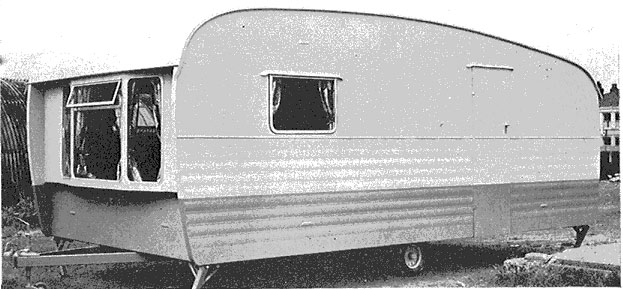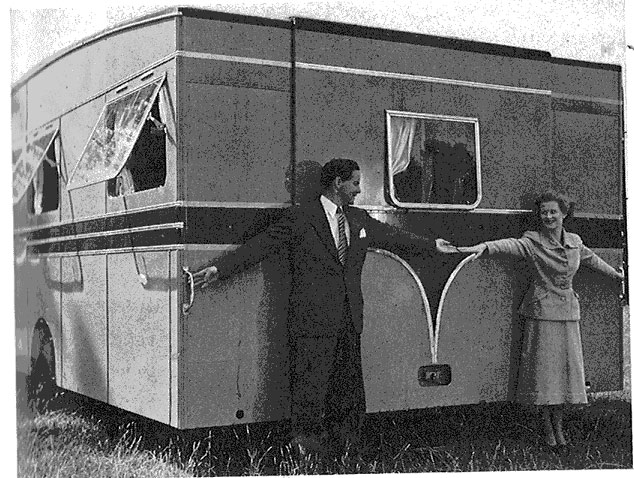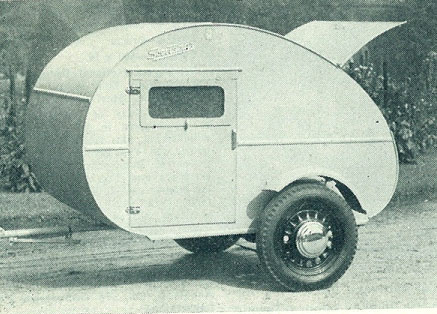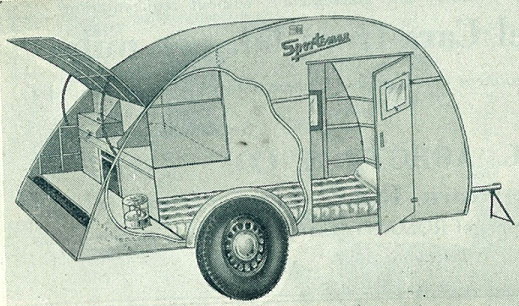

The lack of housing construction during the War years meant there was a shortage of living accommodation which took until the early 1950’s and use of mobile/relocatable homes to ease this situation. The 1950’s saw aluminium eventually supersede hardboard, despite being more expensive, it profiled well, was lighter, less prone to leak and was rot proof.
The caravan market had never before seen such a choice of so-called luxury caravans, but in England, Eccles ceased making luxury caravans post WW2 and concentrated on the more standard models such as ‘Enterprise and Alert’ and continued to push into the export market.
The talking point for 1950 was the new Raven ‘Duck’, a boat/caravan for those who wanted the sailing/caravan experience together. As expected, sales were small but competitors copied and products were available right through to the 1970’s. Raven was a company whose experience of laminating propellers through the war years gave them the know how for making quality ply for their caravans. They even experimented with sandwich construction panels.
Through the 1950’s the B&B Autolock coupling ensured the van locked automatically onto the towball and eliminated the risk of forgetting to lock down manually. This firm, by mid to late 1960’s was supplying 80% of chassis to the industry.
Fires at caravan factories were quite common because paint, timber and soft furnishings were ideal fuel. Smoking in factories was permitted and a discarded cigarette butt would often do a great deal of damage.
In 1954 the British Caravan Road Rally was initiated. This event was intended to be an endurance test of both caravan, car and driver skills, often including all types of road surfaces including cobblestones and water splashes. Although publicity for both caravans and dealers never reached the levels expected, the event continued to take place until late 1970’s.
In the mid 1950’s, caravan makers searched for new construction methods and came up with various new designs – some of which did simply did not sell well. One new material, Glassfibre Reinforced Plastic (GRP), became a firm favourite with some as it offered a range of new, futuristic stylings plus rapid and easy repairs. However it wasn’t until the mid 1960’s that Fibreglass caravans were widely seen.
Towards the end of the 1950’s most of the older makes were fading away, either changing business direction or being taken over by other brands. The fifteen years to 1975 saw the highest touring caravan production figures of the industry’s history. Caravanning continues to be a growth industry today as the ‘Baby Boomers” retire and head bush. There also appears a renewed interest in restoration of older caravans and newer teardrops for the Hotrod movement.


